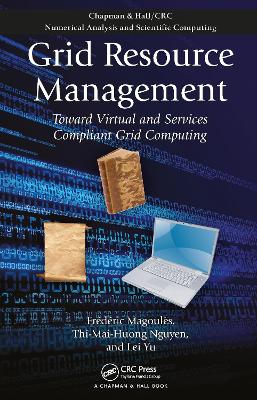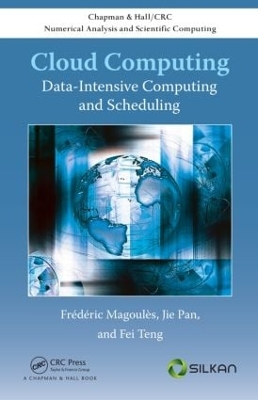Chapman & Hall/CRC Numerical Analysis and Scientific Computi
3 total works
Grid Resource Management
by Frederic Magoules, Thi-Mai-Huong Nguyen, and Lei Yu
Grid technology offers the potential for providing secure access to remote services, thereby promoting scientific collaborations in an unprecedented scale. Grid Resource Management: Toward Virtual and Services Compliant Grid Computing presents a comprehensive account of the architectural issues of grid technology, such as security, data management, logging, and aggregation of services, as well as related technologies.
After covering grid usages, grid systems, and the evolution of grid computing, the book discusses operational issues associated with web services and service-oriented architecture. It also explores technical and business topics relevant to data management, the development and characteristics of P2P systems, and a grid-enabled virtual file system (GRAVY) that integrates underlying heterogeneous file systems into a unified location-transparent file system of the grid. The book covers scheduling algorithms, strategies, problems, and architectures as well as workflow management systems and semantic technologies. In addition, the authors describe how to deploy scientific applications into a grid environment. They also explain grid engineering and grid service programming.
Examining both data and execution management in grid computing, this book chronicles the current trend of grid developments toward a more service-oriented approach that exposes grid protocols using web services standards.
As more and more data is generated at a faster-than-ever rate, processing large volumes of data is becoming a challenge for data analysis software. Addressing performance issues, Cloud Computing: Data-Intensive Computing and Scheduling explores the evolution of classical techniques and describes completely new methods and innovative algorithms. The book delineates many concepts, models, methods, algorithms, and software used in cloud computing.
After a general introduction to the field, the text covers resource management, including scheduling algorithms for real-time tasks and practical algorithms for user bidding and auctioneer pricing. It next explains approaches to data analytical query processing, including pre-computing, data indexing, and data partitioning. Applications of MapReduce, a new parallel programming model, are then presented. The authors also discuss how to optimize multiple group-by query processing and introduce a MapReduce real-time scheduling algorithm.
A useful reference for studying and using MapReduce and cloud computing platforms, this book presents various technologies that demonstrate how cloud computing can meet business requirements and serve as the infrastructure of multidimensional data analysis applications.


